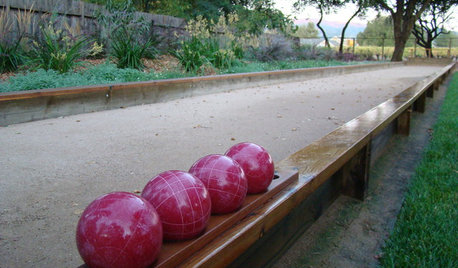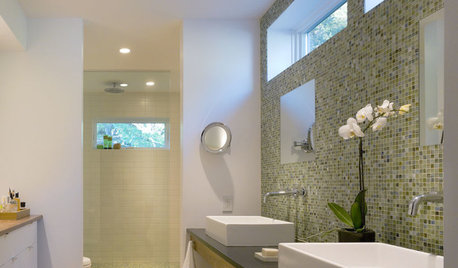i know nothinng about hydroponics, please help me start
abacoian
11 years ago
Related Stories

FUN HOUZZEverything I Need to Know About Decorating I Learned from Downton Abbey
Mind your manors with these 10 decorating tips from the PBS series, returning on January 5
Full Story
FARM YOUR YARD6 Things to Know Before You Start Growing Your Own Food
It takes time and practice, but growing edibles in the suburbs or city is possible with smart prep and patience
Full Story
WORKING WITH PROS10 Things Decorators Want You to Know About What They Do
They do more than pick pretty colors. Here's what decorators can do for you — and how you can help them
Full Story
BUDGETING YOUR PROJECTConstruction Contracts: What to Know About Estimates vs. Bids
Understanding how contractors bill for services can help you keep costs down and your project on track
Full Story
GREAT HOME PROJECTSWhat to Know About Adding a Backyard Bocce Ball Court
A regulation court in a relaxed setting helps you get the most from the Italian pastime. Here's what it takes to build one at home
Full Story
COLORHave You Heard the Hues? 15 Colors You May Not Know About
Name-drop these shades at holiday parties — or better, try one on your walls — and expand your palette possibilities
Full Story
REMODELING GUIDESWhat to Know About Budgeting for Your Home Remodel
Plan early and be realistic to pull off a home construction project smoothly
Full Story
MATERIALSInsulation Basics: What to Know About Spray Foam
Learn what exactly spray foam is, the pros and cons of using it and why you shouldn’t mess around with installation
Full Story
GREAT HOME PROJECTSWhat to Know About Adding a Reclaimed-Wood Wall
Here’s advice on where to put it, how to find and select wood, what it might cost and how to get it done
Full StoryMore Discussions








homehydro
grizzman
Related Professionals
Carson Landscape Architects & Landscape Designers · Wareham Landscape Architects & Landscape Designers · Frisco Landscape Contractors · Wake Forest Landscape Contractors · Braintree Landscape Contractors · Cudahy Landscape Contractors · Lyndhurst Landscape Contractors · Mercedes Landscape Contractors · Morrisville Landscape Contractors · Peoria Landscape Contractors · Teaneck Landscape Contractors · The Villages Landscape Contractors · Wentzville Landscape Contractors · Westford Landscape Contractors · Bensenville Landscape ContractorsabacoianOriginal Author
cole_robbie
rebelhead
grizzman
homehydro
cole_robbie
abacoianOriginal Author
cole_robbie
homehydro
grizzman
cole_robbie
cole_robbie
homehydro
grizzman
cole_robbie
homehydro
cole_robbie
homehydro
homehydro
garland_home
cole_robbie
homehydro
cliver mcguiver